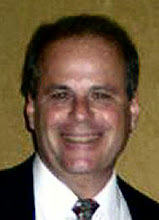First, some definition of terms. A landsman is typically someone who comes from one's hometown, most often a town or city somewhere in Europe. A landsmanshaft (pl: landsmanshaftn) society is usually defined as a mutual aid society, formed by landsleit (plural, non-gender specific form of landsman) when they came over to the United States, Canada and elsewhere. They would often help any landsleit that would immigrate, sometimes finding them a place to stay and a job, offering them a way of meeting their landsleit socially or within their own synagogue. Sometimes they would even have a society doctor who would tend to their health needs--this was in the days before Medicare and Social Security, so the landsmanshaft played many important roles during these years. Perhaps the function that the landsmanshaft society is most known for today is that of offering its members a plot in a burial ground that the society owned. This is often the last remaining function of a landsmanshaft society.
While there were very many landsmanshaftn that were active from before the turn of the twentieth century to the 1950s, there are a relatively small amount left. Most of those societies who become "inactive" send out the deeds of burial plots to their remaining members before the society liquidates. The society's papers are then sent to the New York State Liquidation Bureau and the society becomes defunct. The final role then of a landsmanshaft is most often that of a "burial society."
Saying that, there are still some societies that are still quite active; one such society is the one which I belong to. I am First Vice-President and Cemetery Liaison for the United Zembrower Society (Zambrow, Poland). Because my paternal grandfather Michael Laski--who was born in Zambrow--passed away before I was born, I know nothing of his life there. However, I wish to know more about the town in which he was born and lived at least part of his life before his immigration to the United States in 1902.
Our Zembrover society still exists and is "going strong." Our society today has more than one hundred and thirty paid members. Those who can attend our meetings do so once or twice a year when we may lunch together, listen to the occasional speaker, and conduct society business. Though our membership is comprised of few landsleit per se, the descendants of Zembrovers genuinely seek the comraderie that their parents and grandparents once found in large numbers decades before, e.g. in Eretz Israel or on the Lower East Side of Manhattan. They seek to learn more about their "ancestral" town and wish to work to preserve the memory of not only their own family's life in Europe, but the history of the town and its Jewish population as well.
In this vein, the Museum is actively gathering information about whatever landsmanshaftn remain, everywhere in the world. This list will be put online within the Museum's website at some point in the near future, in the hope that it will spur some to join a society of interest to them.
If you know of such a landsmanshaft society, please write to me at steve@museumoffamilyhistory.com . Please answer the following questions:
--name of society, name of contact person, address/email address, phone number (this is not necessary if privacy is a concern)
--year society was established
--number of current members
--range of activities/functions
--how often do the members meet?
--do they have a website? do they publish a newsletter?
--do they own one or more society burial plots? Where are they located?
--any other pertinent information
Hopefully this list will be ever-evolving. When the list is put online, an announcement will be made on this blog.
Lastly, if you have any landsmanshaft material that you believe would be of interest to others, that can be put online within the Museum's website, please contact me at the above email address.
Subscribe to:
Post Comments (Atom)




No comments:
Post a Comment